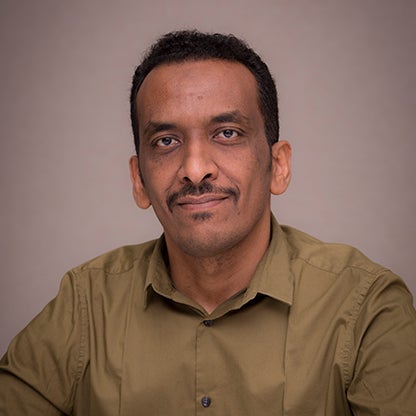
الدكتور أمير عبدالله
عالم
الدكتور أمير عبدالله
عالم
المؤهلات العلمية
PhD
MSc
الكيان
معهد قطر لبحوث البيئة والطاقة
السيرة الذاتية
Dr. Amir Abdallah has academic and industrial experience in the development of solar cell efficiency and PV module technology. This includes fabrication of silicon solar cells, e.g., various process optimization and characterization to improve solar cell efficiency and PV module fabrication. At QEERI, Dr. Abdallah has contributed to the establishment and accreditation of the PV reliability lab. Further, as Lead Principle Investigator (LPI), he has secured two external funds with international collaborators - first project is to improve passivated contacts for PERC solar cell, and the second project is on technology development for PV module for desert climate.
PhD
Eindhoven University of Technology (Eindhoven, Netherlands)
2007
MSc
Delft University of Technology (Delft, Netherlands)
2002
- Improvement of solar cell and module efficiency
- PV module performance and reliability
- Standard testing of PV module
- Mechanical integrity of multi-material structures
Scientist
Qatar Environment and Energy Research Institute (QEERI), Doha, Qatar
2014 - present
Design Engineer
ASML, Eindhoven, Netherlands
2014
Process Engineer
Sulzer Turbo Services, Lomm, Netherlands
2011 - 2013
Research Engineer III
King Fahd University of Petroleum and Minerals, Dhahran, Saudi Arabia
2008 - 2011
Process Development Engineer
OTB Solar, Eindhoven, Netherlands
2007 - 2008
- “Doped Nickel Oxide Carrier-Selective Contact for Silicon Solar Cells” IEEE JOURNAL OF PHOTOVOLTAICS (2021); doi: 10.1109/JPHOTOV.2021.3095458
- “Optimized Ni1−xAlxO hole transport layer for silicon solar cells” RSC Advances 38 (2020) 22377-22386; doi.10.1039/d0ra02982c
- “Record Efficiency N-type and High-efficiency P-type Mono-like Silicon Heterojunction Solar Cells with High Temperature Gettering Process” ACS Appl. Energy Mater. (2019) 4900-4906; doi.org/10.1021/acsaem.9b00608
- “Annealing of silicon heterojunction solar cells: Interplay of solar cell and Indium-Tin-Oxide properties” IEEE Journal of Photovoltaics, Volume: 9, Issue: 5 (2019) 1202 - 1207; doi.10.1109/JPHOTOV.2019.2924389
- Atomic layer deposited ZnxNi1-xO: A thermally stable hole selective contact for silicon solar cells, Appl. Phys. Lett. 113, 262102 (2018), doi.org/10.1063/1.5056223
- Delamination of CIGS thin film photovoltaic module in desert climate. 35th European Photovoltaic Solar Energy Conference and Exhibition (2018), doi: 10.4229/35thEUPVSEC20182018-5BO.12.6
- Performance of Silicon Heterojunction Photovoltaic modules in Qatar climatic conditions, Renewable Energy 97 (2016) 860-865, doi.org/10.1016/j.renene.2016.06.044
- Structural origins of intrinsic stress in amorphous silicon thin films, PHYSICAL REVIEW B 85, (2012) 075202, doi: 10.1103/PhysRevB.85.075202
- Buckle initiation of patterned ITO structures on a polymer substrate, Engineering Fracture Mechanics 78 (2011) 877–889, doi.org/10.1016/j.engfracmech.2011.01.013
- Buckle initiation and delamination of patterned ITO layers on a polymer substrate, Surface & Coatings Technology 205 (2011) 3103–3111, doi.org/10.1016/j.surfcoat.2010.11.025
The impact of silicon solar cell architecture and cell interconnection on energy yield in hot & sunny climates, Energy Environ. Sci. (2017)
Performance of Silicon Heterojunction Photovoltaic modules in Qatar climatic conditions, Renewable Energy 97 (2016) 860-865
Structural and physical properties of the dust particles in Qatar and their influence on the PV panel performance, Nature Scientific Reports (2016).
Emerging frontiers of N-Type silicon material for photovoltaic applications: The impurity-defect interactions. Front Nanosci Nanotech, Volume 1 (2015) 2-12.
Performance improvement techniques for photovoltaic systems in Qatar: Results of first year of outdoor exposure, Energy Procedia 77 (2015) 386 – 396.


